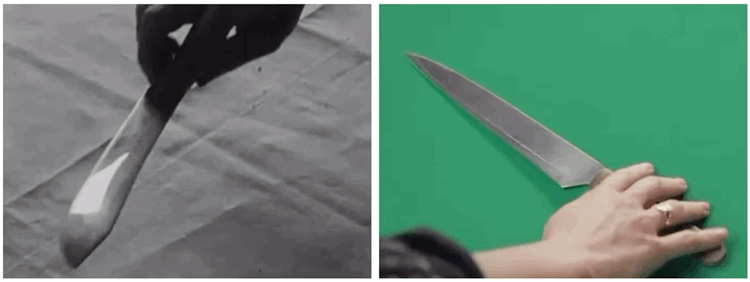

‘”I was born in 1968. Thus for me, the question of pleasure and the time period was bound to be fundamental. I have the impression I was born into a generation that speaks seriously about things that are not very interesting, while I dreamt of intelligent things being said lightly. The film also comes a great deal from that.”
‘These words by the director, borrowed from the press release for De la guerre (2008), summarise something essential about Bertrand Bonello´s art into a few sentences. The central themes in Bonello’s films are time and epoch, youth, rebellion, the gap between generations and the longing for freedom – whether it is to detach oneself from the values and norms of society, from one’s own persona, artistry, personal relationship or normative sexuality. At the same time, like Bonello’s quote reveals, the year 1968 is linked in the director’s mind with dreams, something that not necessarily ever existed – or at least not in the desired form. Bonello’s films are tinted with a certain melancholia and a sense of being lost, something that often finds its consummation in strikingly beautiful scenes where gems of classical and sacral music (Bach, Händel, Vivaldi, Wagner, Mahler, etc.) detach the events from the storyline to certain kinds of pauses or breaks.
‘Bonello uses classical music in a sort of similar way to Pier Paolo Pasolini. The director’s films contain also popular music, particularly pop or rock pertaining to the epoch in scenes set in night clubs or bars. The uniquely intense relationship between picture and music and the director’s ability to create the visual expression in unison with the beat of the soundtrack undoubtedly comes from his background. Bertrand Bonello is not only a film director but also a musician and composer. In his films, Bonello does not create stories and narratives – instead he produces comprehensive, at times hypnotic experiences.
‘Bertrand Bonello’s films are an exception to the risk-free approach of mainstream cinema. He is not afraid to try out new forms and test the boundaries of cinema expression. The first ones represent the artist’s identity and creativity as well as their fragmented nature, as does the split screen segments of Saint Laurent (2014). Le Pornographe (2001) is a film depicting the relationship between father and son, but also an essay about filmmaking, i.e. a director’s choices and mise en scène. In all his works, Bonello proves that he is a magnificent director of actors. A good example is one of the most touching performances by Jean-Pierre Léaud as an adult film professional.
‘Bertrand Bonello’s films made prior to 2011’s House of Tolerance may hang in relative obscurity for American audiences, but they nonetheless offer essential evidence for contextualizing the writer-director’s overall concerns as an artist. In 2001’s The Pornographer, a director in the adult film industry feels trapped between his political ideals about sex as a revolutionary act and the lacking market for such a mode of pornography. That Jean-Pierre Léaud, arguably the poster child for the French New Wave, plays the filmmaker inaugurates Bonello’s ongoing determination to interrogate various periods of history through an interpretation of the present.
Characters search for meaning by managing their surroundings in Bonello’s films, an idea that takes on its most sadistic overtones in 2003’s Tiresia, in which Terranova (played by Laurent Lucas) kidnaps a prostitute who, to Terranova’s surprise, is transgender. On War, from 2008, finds the reflexively devised central figure—a filmmaker named Bertrand—struggling to create a meaning for his life after he’s accidentally locked inside a coffin overnight. Such existential questions of orchestrating one’s environment through the control of others reach an apotheosis in Nocturama, in which a group of young people plot and execute a series of terrorist attacks across Paris. Things get fuzzy after the violence; the logic behind their uprising is never absolute, especially as their plan to evade capture involves holing up inside a mall that quickly becomes a pleasure dome of recent fashion trends and popular music.’ — Satu Kyösola
____
Stills
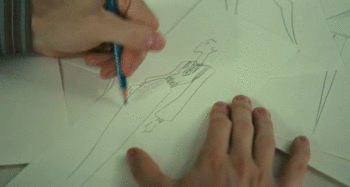




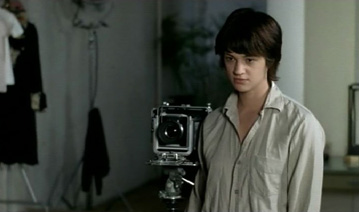

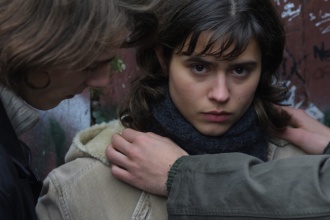

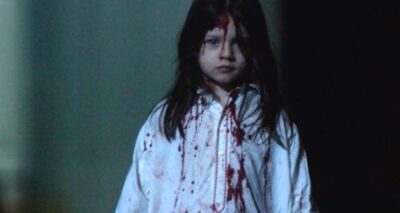






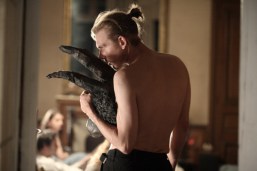


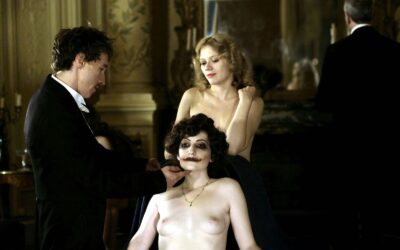

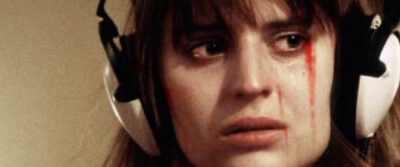

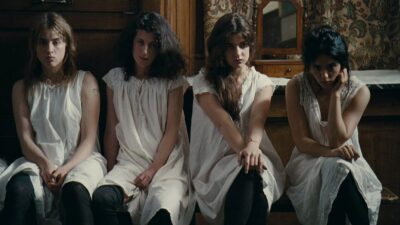
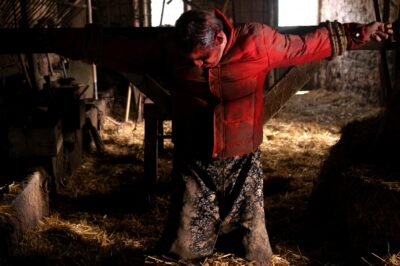
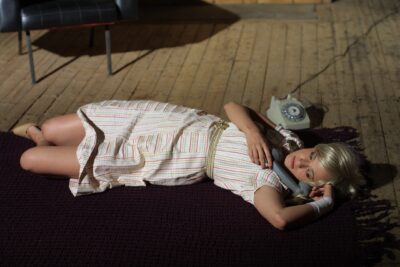
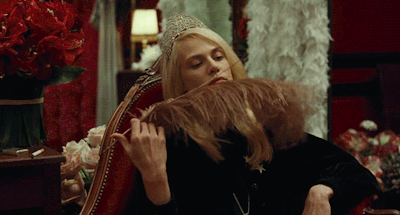


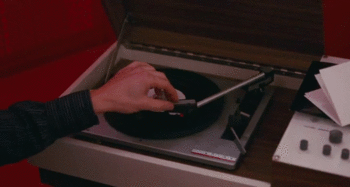



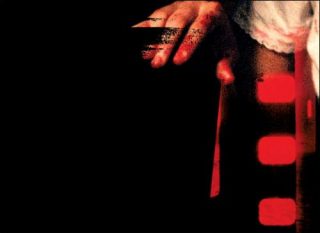

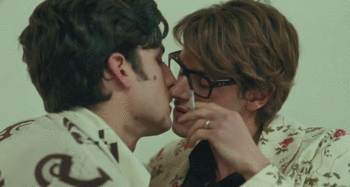




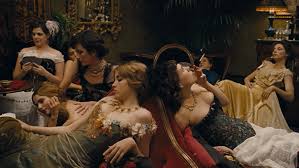




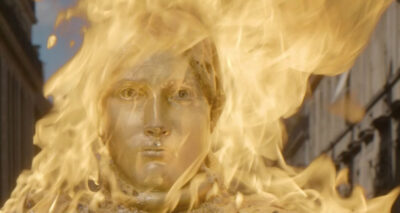
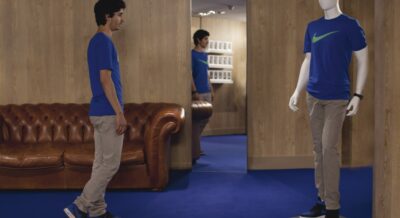

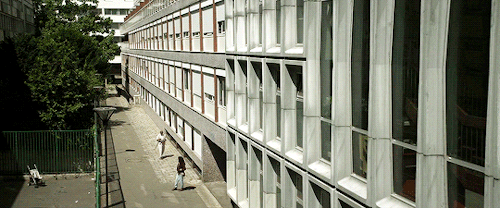

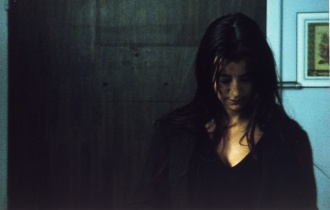
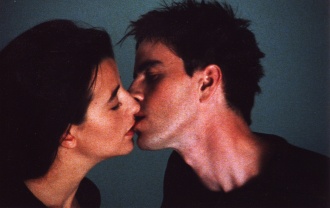
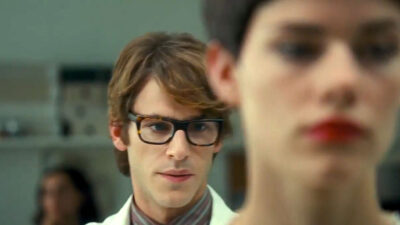



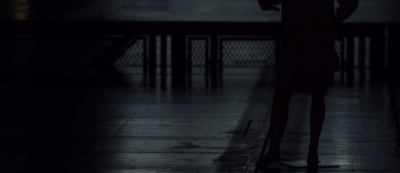

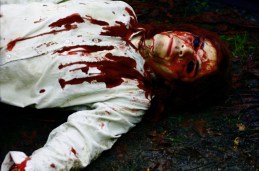

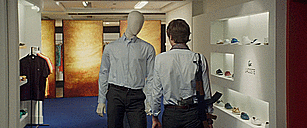

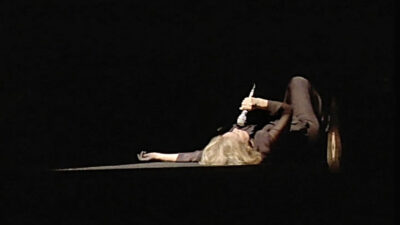
_____
Further
Bertrand Bonello @ IMDb
Bertrand Bonello on Nocturama, Pop Culture, and Terrorism
Behind Closed Doors: A Conversation with Bertrand Bonello
10/10: Bertrand Bonello
Bertrand Bonello révèle ses 10 films préférés de la dernière décennie
“Je ne sais pas s’il y aura un prochain film”
Bertrand Bonello To Head Cinéfondation & Short Films Jury In Cannes
BERTRAND BONELLO as told to Erik Morse
You’ve Never Seen a Movie About Terrorism Quite Like ‘Nocturama’
Bored, Beautiful Terrorists With a Taste for Luxury Brands
Our critics agree that Nocturama may be the movie of the year
‘Nocturama’ is a haunting portrait of young French terrorists in action
Bertrand Bonello Takes on Teen Terrorism in the Hypnotizing, Estranging “Nocturama”
Un autre film est possible
Bar talk
Time to Spend: A Conversation with Bertrand Bonello
«RESTER DANS LE GESTE IRRATIONNEL, DANS LE GESTE TOUT COURT»
HERE’S TO THE CRAZY ONES
Ultra-Realist Abstraction
BERTRAND BONELLO ON CINEMA
_____
Extras
Rencontre avec Bertrand Bonello
Bertrand Bonello – Tracks ARTE
Bertrand Bonello’s Closet Picks
Masterclass – Bertrand Bonello
_______
Interview
from Film Comment
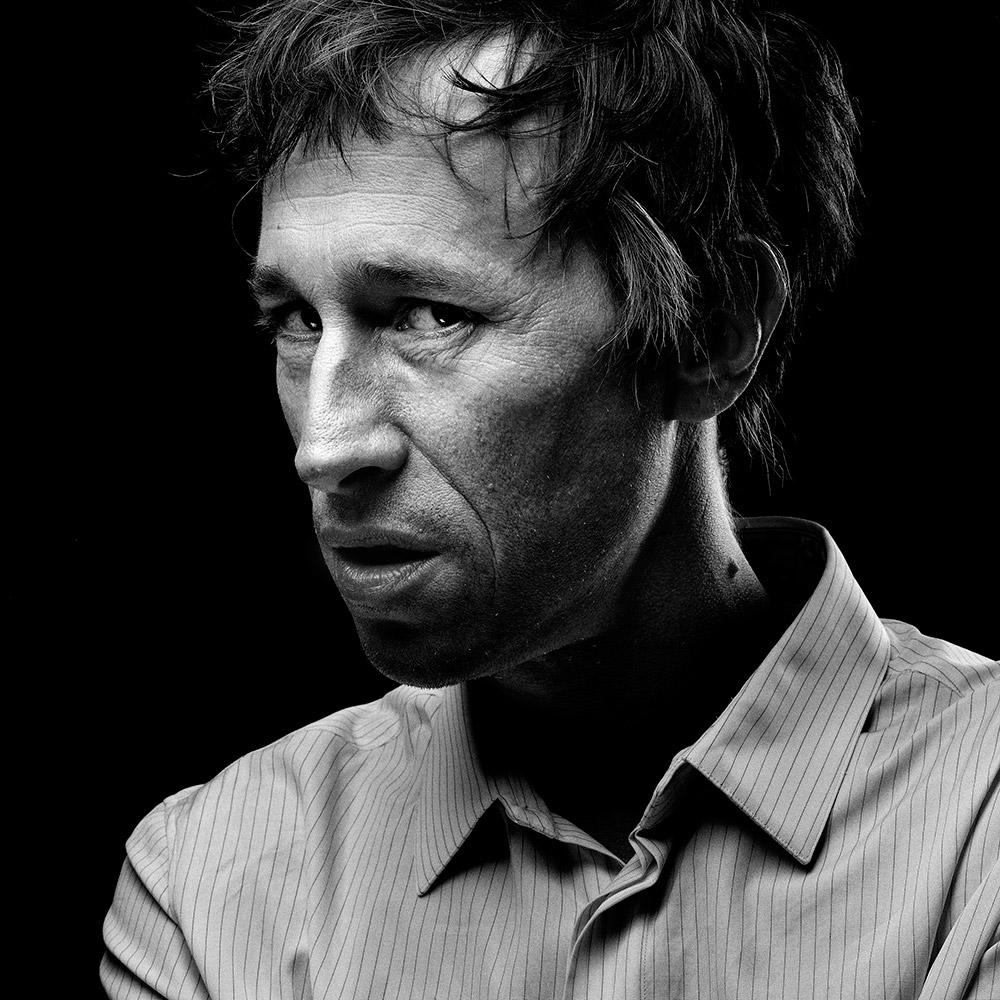
In your short film Où en êtes vous Bertrand Bonello?, you recount the course of your cinematic journey to your daughter, and at one point there’s a line that moved me a lot: “Cinema harms men.” And in connection with that, I wanted to ask how you experienced the shooting of Antoine Barraud’s Portrait of the Artist—a film that deals a lot with the distress and solitude of the artist and that, to a certain extent, is also a portrait of you.
Portrait of the Artist is a particular kind of film because it was made over three years. Antoine wrote me a letter one day saying he was really in love with my films, and that he did portraits of artists: he had done films on Koji Wakamatsu and Kenneth Anger. And he said he wanted to make a documentary about me. I asked how long it would take, and he said a few days. Then we saw each other a couple of times, and he said that it would be interesting if while we’re doing the portrait, there is a sort of red mark that grows on my back. And from then on, the film became a fiction. It was a rather strange experience for me, because I didn’t know exactly where it was leading or when it would end. Every three months, Antoine would say: “We’re going to shoot for two more days.” But I think the fact that it was made over a long period of time gives it a very free feeling.
But did it also provide you with a space for personal expression?
I tried not to reflect on the film, because I think that’s the director’s job. I tried to be the actor that I like working with as a director. Someone who doesn’t ask questions, who lets go, and who tries to do the best he can at any given time. Someone who doesn’t have an overall vision of the film, because I think that’s the director’s work. So I tried to be as sincere as I could in every scene, I came in knowing my lines and I tried to do things the way I felt them, without having big ideas on the creation of the film. I tried to abandon myself as much as possible. Portrait of the Artist really belongs to Antoine, and that short film, the letter to my daughter, is really me at every word.
Your narratives are often elliptical, responding to poetic rather than causal or logical demands. How did you approach the question of time in Saint Laurent, in which you sculpt it a bit like Tarkovsky, blending past, present, future, reality, dream, and delirium?
It happened progressively. Early on, we structured the film into three parts, with a second time period for the third part. Then when we started getting into the details of the scenes, I realized that I wanted to enter Saint Laurent’s mind more and more as the movie progresses. And entering someone’s mind also means mixing everything up a little. I had this image, for instance, that the last hour would feel like entering a room with mirrors everywhere—each mirror reflects an image of Yves but it’s never the same. And that’s when we try to get into his brain a little with mental images like the snake or the Proust painting. But afterward it’s the question of how everything manages to resonate with one another, and that’s really not theoretical at all.
It’s something organic, to borrow the title of your first feature.
Yes, exactly, it’s about sensations. If for example we show Helmut Berger [as the older Saint Laurent] saying something, and then we go to Gaspard [Ulliel], suddenly that sentence echoes with him. So it’s more like painting.
In fact, you use the camera like a brush. You often favor long tracking shots that reveal the scenes as they are being constructed, creating an almost documentary-like immediacy. This idea of construction is at the heart of a scene like the meeting of Jacques de Bascher and Saint Laurent, in which the camera weaves the gaze like a thread. How did you conceive and execute that scene?
There are two things. It’s true that one of my obsessions was to do the club scenes successfully. First because I think they are essential to the film, and also because I am often disappointed when I watch club scenes in movies. I find that the sound is not done well—it looks like a music video or suddenly the music is lowered so we can hear people speak, and the extras keep dancing in the background but there is no music. So I really wanted to create an atmosphere or an ambience in those scenes. The second thing is that this was a club that Yves went to every night, and I thought that instead of doing four small scenes in there, we would do it in one step, so we would do a long scene that would last six or seven minutes. I thought that it was better to spend time with them in there, try to feel the world, the sweat. I have to say that I had brilliant extras. They gave everything they had and that helped a lot.
But then I thought to myself, how can I film a meeting without a word? And the idea came to me on the day of the shoot. I had certain shots in mind coming in, and one of them was just a tracking shot for something else. The club was like a square: there was Gaspard on one side and Louis on the other, and the crowd in-between. We had installed dolly tracks, and suddenly I thought to myself, what if we do a sequence shot rather than a montage, which would make the scene feel, not artificial, but a bit fabricated, and the sequence shot allows to isolate Gaspard, then suddenly we feel the ambiance, and we arrive on Louis isolated. So we can isolate the two by showing that they are separated by the crowd, and the sequence shot allows to really feel the scope of things, the duration and the distance, and I did it three times. It takes a bit of time, but I need that time to show how things develop in that scene. And when you have done that, you just need a shot-reverse-shot to make the scene work. But of course this doesn’t mean you arrive on set empty-handed. You have thought everything through in advance, but you can change your mind, because suddenly you see that something else might work.
And how do the actors experience a scene like that?
It’s extremely difficult because there are extras everywhere, and when the camera gets to a certain spot, I shout “Extras out!” and there is an assistant who gets behind them and pulls their sweater. It’s very technical because the shot is a very complex one to achieve, even if it doesn’t look like it. I rarely do this, but in that kind of a scene, the actors really have to be at the service of the mise en scène.
I read a phrase by Emmanuel Levinas that made me think of that scene: “To watch a look is to watch something that doesn’t surrender itself, doesn’t give itself over, but stares at you: it is to watch a face.” And I think the movie also ends a bit on this idea, with that shot of Saint Laurent staring at us. It’s as if the spell is broken, and we are brought back to reality, like at the end of House of Tolerance.
Oh, if I had departed from that Levinas phrase to construct that scene, it would have been petrifying! [Laughs] Actually, for Saint Laurent, I thought that the ending line “Move your arm to show that you are alive” was sublime. I thought that it was a line that was at once morbid and alive, that opened the movie rather than closed it. And there’s also something that Yves had, and Gaspard has it too, something very particular—that kind of immense smile that “crosses out” the face. The ending of the movie can be quite deadly in a sense. For me, ending on that smile combined with that line, it’s like taking simple elements and putting them together, and suddenly creating something that’s not simple anymore. House of Pleasures is the same. You have the jump to contemporary times, and suddenly we’re in another period but the actress is the same, we switch from 35mm to MiniDV, but there is still prostitution going on.
How do you manage the rhythm of that final shot in Saint Laurent? We see the smile only for a few seconds and then suddenly the music comes in and breaks it.
For me a shot is like a note, and I always ask myself when I need to hit the next note. And the thing is always to make it surprising, without it becoming ostentatious—to hit the note either too early or too late, so as not to fall into something metronomic.
One thing that strikes me in your early films—and that is absent in House of Tolerance and Saint Laurent, except in diegetic situations like the reading of letters or books—is the use of voiceover as a narrative tool, but especially as a way of penetrating the psychology of the characters. In a film like Tiresia (03), it has quite an unsettling effect because it feels like we’re inhabiting the thoughts of that obsessive esthete played by Laurent Lucas.
Voiceover has a bad reputation in cinema because people tend to think of it as a literary device. But for me it is in fact a very cinematic device, because it adds something to the image but also frees it from what is being said so that it can serve another purpose. So it creates a discrepancy or adds something complementary. I like that the image says something other than what is being spoken—it’s very enriching. Of course, I also use it as a kind of musical partition, which becomes something very intimate and personal for the characters.
In House of Tolerance, you seem to observe a world without intervening—abstractly speaking, of course, because you are in fact the creator of that world—but you simply show the life of these women, without romanticizing it, without a concern for plot, almost in the manner of a documentarian. What made you want to operate this way?
There was a lot of factual research involved in that project: private diaries, journalistic accounts, etc. So I had a lot to work with. And from brothels, we only knew what happened between 10 p.m. and 6 a.m. Many painters have depicted that setting, as well as several novellas, but mostly from the point of view of men, and therefore from a nocturnal point of view. I wanted to show what these women did between 6 a.m. and 10 p.m. And inevitably, that becomes something like, I wouldn’t say documentary, but more like a chronicle. Because in fact what do they do? They wash, they eat, etc. Maybe these aren’t fascinating things script-wise, but I thought they were very beautiful to show.
So the script isn’t at the center of the film—it’s more about this idea of witnessing these women’s lives without them being watched by men. Because I quickly came to think of these women as actresses—they go onstage and then they return backstage. They are different at night and during the day, and the film was supposed to show the two. But in fact it’s the same for Saint Laurent. There’s Saint Laurent during the day and Saint Laurent at night. What’s not documentary-like about House of Tolerance is that there isn’t a single line that’s improvised—everything is very scripted. And I used the word “chronicle” because I think there is a sort of platitude in the movie that makes us live with these women.
Did you look at any paintings for House of Tolerance?
I was looking at paintings that were contemporary to the period of the film, but not so much actually. I was more interested in anything related to the representation of a group of girls, whether in 19th-century paintings, or even pictures in fashion magazines, just to get a sense of how to put all those girls together in the frame. But I examined 19th-century paintings also to understand how lighting worked back then. It’s quite a particular period because it’s during the arrival of electricity. So we had decided, arbitrarily, that we would only have electricity on the ground floor, and that the higher we went up, the less light there was, and in the end, there were only candles. These are sort of carnal or sensual ideas that come from looking at those pictures.
You’ve often talked about your desire to make the script “disappear,” to allow the film to be transmitted through the actors. How did you experience this idea on the shoot of The Pornographer, for instance, when you’re working with someone like Jean-Pierre Léaud?
When I watch a film, if I feel the script, if I feel the pages being turned, if I feel the plot or whatever, for me it’s not a film anymore. So it’s in that sense that I mean making the script disappear. But in order to achieve that, paradoxically you have to work on the script a lot. You have to see it as a path to the mise en scène. That’s why the script for me is something that’s somewhat badly written—it’s not meant to be read by itself, it’s meant to disappear, it’s a working document. And making the script disappear means not allowing it to show up in the image.
In terms of working with Jean-Pierre, he has such a particular connection with what’s real, what’s not real, with words. When he learns his lines and acts, he doesn’t know what he’s talking about anymore. It’s only a music in his head. That’s what I think makes his performances so distinctive. It’s not at all about psychology with him, about what the character does at a certain moment. He invents his own music. Afterward it’s up to us to know how to navigate his performance and integrate it in the movie. But he has already departed.
Your next film is called Paris est une fête. I know the title comes from Hemingway’s novel, A Moveable Feast, but maybe it’s also rooted in this line from The Pornographer: “We live in a time without feast, and we have contributed to it.” Is there a link between these two movies?
Yes, there is. It’s not a link that I looked for, but Paris est une fête, which is now titled Nocturama, tells the story of a group of young people who plant bombs in symbolic places in Paris. The Pornographer was about young people who already had revolutionary ideas, but they were more of a bourgeois youth and the kind of revolution they envisioned was more intellectual. In Nocturama, it’s much wilder because they actually take action. But it’s not only a banlieue youth. I don’t want the movie to stigmatize a religion or a geography in any way. The way the group comes together is told in the film, but there are people who come from the banlieue, others from the 7th arrondissement, some from Sciences Po [a preeminent research university]. I had written this movie after House of Tolerance, but the proposal for Saint Laurent came and I set it aside. But I feel like now is really the time to do it.
And to conclude, perhaps we can return to that phrase that I seem to have misinterpreted: “Cinema harms men.”
The answer would almost be in the character of Yves Saint Laurent. At a certain point we completely consume ourselves in doing things—it costs us a lot. At least it costs me a lot. That short film [Où en êtes vous Bertrand Bonello?] also speaks about the movies that I couldn’t make. And that’s a flame inside of me. When I say “cinema harms men” there is also this idea that it drives you mad. Because there is something megalomaniac in cinema—this mixture of art and industry—and it also harms the relationships that we have with other people.
_____________
15 of Bertrand Bonello’s 19 films
_____________
Quelque chose d’organique (1998)
‘Siberian characters wandering in an icy Montreal, a universe a bit autistic, a tone calmly desperate. Bertrand Bonello’s first secret film. It is hard to blame those whom this film repels. This is not a joke, but a sad and sad love story where all the characters have curious distant relations, including Paul (Laurent Lucas) and Marguerite (Romane Bohringer), married for five years, who are come to Montreal where they lead the lives of young people. While most films cultivate a mythical “viewer identification”, Bertrand Bonello began his career under paradoxical auspices, seemingly looking for exactly the opposite. Without Paul’s explanatory voice, we would not know who this mysterious young woman is (the wife), the sick child in a hospital (the son), and so on. The film is an illustration of the word “foreign”, declined in almost all its meanings. What unfolds before our eyes with a stubborn obstinacy is not society as we usually understand it, but a collection of individuals juxtaposed by a mere whim of chance and biological necessity, as the title suggests.’ — Vincent Ostria
Trailer
_______________
Le Pornographe (2001)
‘Jacques Laurent (Jean-Pierre Léaud) made pornographic films in the 1970s and ’80s, but had put that aside for 20 years. His artistic ideas, born of the ’60s counter-culture, had elevated the entire genre. Older and paunchier, he is now directing a porno again. Jacques’s artistry clashes with his financially-troubled producer’s ideas about shooting hard-core sex. Jacques has been estranged from his son Joseph for years, since the son first learned the nature of the family business. They are now speaking again. Joseph and his friends want to recapture the idealism of 1968 with a protest. Separated from his wife, Jacques strives for personal renewal with plans to build a new house by himself…’ — David Carless
Trailer
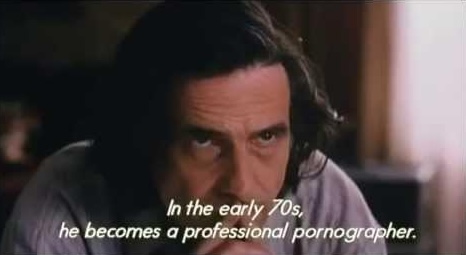
___________
Tiresia (2003)
‘An early film by totally underestimated french director Bertrand Bonello. Tiresia is a biblic story from the start and evolves into one of the most radical criticism on christian culture and religion I have seen to date. It’s all about our desire to see everything, to know and to foresee anything, to force everything into existence. In doing so, we hide from our real desires which are represented in all the things we don’t want to see from now on: poverty, distress, all kinds of mutations, degenerations, people that are rejected by their presumed otherness. Tiresia tells us this story, how the emergence of modern european thought is dependent on it’s dark side: people we don’t see who are yet there. How the essence of our culture lies literally in the eye. Bonello’s cinematographic eyework serves this perfectly. This is like a Robert Bresson film for the new millenium.’ — Johannes/letterboxd
Trailer
Excerpt
_______________
Cindy: The Doll Is Mine (2005)
‘If Cindy is, in the end, neither a school variation on Cindy Sherman, nor a fetishistic ceremony around Asia Argento, it is because the film is crossed, in a magisterial way, by an unforeseen event. The director of Pornographe and Tiresia thus begins to retain the American artist as his basic schizophrenia, his dual role as a photographer and model, putting himself in the scene in the most diverse situations and costumes. This gives two Asia Argento, one (brunette, male) directing the other (blonde, female) in a series of poses patiently chained in field / backlight.’ — Patrice Blouin
the entire film
________________
My New Picture (2007)
‘A woman wearing a pair of headphones listens to music. Using their eyes and ears, the audience shares this sensory experience through the mental pictures generated by the music.’ — letterboxd
Excerpt
________________
De la guerre (2008)
‘After spending a regrettable night in a coffin, Bertrand reviews his life and decides to withdraw to a remote, mysterious place, the Kingdom. He is welcomed by Uma, for whom the attaining of pleasure and joy amounts to a war to be waged against the modern world.’ — Cineuropa
Trailer
Excerpt
_______________
House of Tolerance (2011)
‘The world of Bertrand Bonello’s fifth feature, House of Tolerance, is one where a thousand years of sleep doesn’t seem all that strange: Not many films have ever approached the possibilities afforded by the slippery subjectivity of cinematic time so directly, or with such intelligence. An obvious fact: From the very first cut, the cinema’s project of overcoming time has endured, only varying in the intensity of its discoveries. One finds it no less in the montage of Porter and Griffith, where time was first made to double back to meet the demands of the space of the movie screen, than in the discrete durations of Roberto Rossellini or Max Ophüls, where the triangular relationship between the shot, filmic convention, and the continuity of lived experience was exploited to achieve a sort of synecdochal forgery-representation of time. Bonello’s achievement in House of Tolerance continues the line of inquiry set in motion by Hou Hsiao-hsien’s films of the 1990s, a synthesis of the aforementioned dominant strains that’s then extended by being triangulated itself with our, i.e., each individual member of the audience’s, conception of history.’ — Slant Magazine
Trailer
Interview Bertrand Bonello for House of Tolerance
________________
Ingrid Caven, musique et voix (2012)
‘Ingrid Caven offers a rich repertoire of songs in French, German and occasionally English; at times, she dispenses with words and simply plays with sounds.’ — IMDb
NYFF Press Conference: Ingrid Caven: Music and Voice
Conversa com Ingrid Caven, Bertrand Bonello
_________________
Saint Laurent (2014)
‘In the penultimate scene of Bertrand Bonello’s “Saint Laurent,” the year is 1977 and a group of French journalists are informed of rumors that the titular designer has died. Upon hearing this, they quickly begin readying his obituary and formulating a headline. The group all rattle off quick and humorous soundbites to summarize the life and career of the couturier. He turns out to be very much alive, their attempts at writing him off proving unnecessary. This seems akin to the approach a lot of filmmakers take when making biopics; make a condensed and accessible package of the greatest hits of a well-known person’s life. Bertrand Bonello realizes the futility of trying to fully encompass someone’s life and identity. The film is a different breed to the onslaught of recent Oscar-winning biopics like “The Imitation Game” or “The Theory of Everything,” which seem to operate out of a misguided nobility to honor their subject with a definitive statement, brushing over any unpleasantries or ambiguities. “Saint Laurent” thrives on these tantalizing ambiguities, playfully mixing fact with fiction.’ — Clint Holloway
Trailer
Excerpt
Anatomy of a Scene w/ Director Bertrand Bonello
_____________
Nocturama (2016)
‘To waste no time: Bertrand Bonello’s Nocturama has nothing to say about either Nick Cave or the Bad Seeds, and, more crucially, is not a film about terrorism. Perhaps a strange assertion, the latter, given that the movie spends all 130 of its sublime, stomach-churning minutes in the company of a crew of young men and women who are in the process of executing a meticulously coordinated bomb attack on Paris. But here, as in Julia Loktev’s Day Night, Day Night (2006) and Kelly Reichardt’s Night Moves (2013)—two other semi-recent arthouse films that showed terrorism but were ultimately more concerned with matters pertaining to the psychology of paranoia, the fundamental complexity of morality, and the aura of their respective landscapes—ideology as a question or line of enquiry is provocatively mitigated in favour of purer, more abstract, and affective expressions. This isn’t to say that ideology is absent in Nocturama; on the contrary, it’s everywhere—all-encompassing, total, and final—and yet the film’s reticence toward obviously stating a position, its profound ambivalence toward passing the judgment on radicalism that a post-Hebdo and post-Bataclan audience perhaps desires, is glaring and improbably bold. So much so that our efforts to access it must re-route and search for alternative entry points if we are to be able to answer the question of what this movie even is.’ — Blake Williams
Trailer
Excerpt
‘Nocturama’ Q&A
__________________
Sarah Winchester, opéra fantôme (2016)
‘An opera ballet that doesn’t exist. A ghost-like piece, played in Opera Bastille and danced at Opera Garnier, An almost mystical link between both scenes, A musician is testing sounds in Bastille’s pit, The choir are taking their place in the rehearsal studio, Both sides are fine tuning the work in progress of an opera ballet : SARAH WINCHESTER, her grief, her madness, her home and her ghosts.’ — IMDb
the entire film
____________
Zombi Child (2019)
‘Bonello’s Zombi Child is too languorous and transfixed to behave like the horror film its component parts dictate it ought to. It’s an answer to his own prompt, found between musings of statues of corpses in his 2008 film De la guerre (On War). Cult leader Asia Argento asks Bonello surrogate Mathieu Amalric why he doesn’t make horror films. “The fear of being ridiculed, probably.” Seeing what he’s done with his true stab at horror, it’s easy to understand why he was worried. He reaches not for scary things in the dark, but bathetic visions of enslavement lit by candles and the rising sun. What scares Bonello, as Zombi Child makes abundantly clear, is lack of control, of being held accountable for the sins of other people. The enormity of colonization, the way its mindset bled through to the colonized and continued in insidious ways even when it was legally abolished. Slavery is indeed more ghastly than any knife-wielding maniac, and Bonello’s been saying so for the last decade of his career.
‘He began looking almost ordinary. Something Organic, made in 1998, is about a struggling relationship between two beautiful French people with divergent interests. But for the deep colors of the set design, the man’s job as a zookeeper, and a rather frank sex scene before the end credits, it barely displays the director who would emerge. 2001’s The Pornographer is the proper first step, as French New Wave icon Jean-Pierre Léaud plays a retired director of sex films coaxed back on a set when he and his wife fall on hard times. His estranged son is played by Jérémie Renier, meant to represent the new vanguard of French cinema directed by the likes of Jean-Pierre and Luc Dardennes and Christophe Gans as much as Léaud was meant to suggest his first directors: François Truffaut and Jean-Luc Godard. It would be tempting to suggest that Bonello sits at the crossroad of the new and old masters, but in truth he’s more akin to Catherine Breillat, if she traded her penetrating philosophical inquiry for pure intimate spectacle. Bonello once tried to be that sort of filmmaker but wisely gave it up. He was always more surefooted looking outwardly.’ — Scout Tafoya
Trailer
Excerpt
_____________
Où en êtes-vous? (Numéro 2) (2020)
‘Bertrand Bonello reworks the last minutes of his 2016 film Nocturama, which documents the logistical operations and the organization of terrorist attacks in Paris by a group of teenagers. Starting with “Où en êtes-vous?”, a video commissioned by the Centre Pompidou in 2014 and conceived as a letter to his then 11-year-old daughter, the director makes a new work altering the final sequence of Nocturama and completely modifying the textual component and the soundtrack in this video essay as a second letter written for his now 17-year-old daughter.’ — Letterboxd
the entire film
_________
Coma (2022)
‘Amidst a period of unprecedented world events, an eighteen-year-old girl’s life is placed on hold. Isolated in her bedroom, she falls under the spell of the mysterious vlogger Patricia Coma. As time carries on, the lines between her dreams, fears, hopes, and reality begin to blur into one another. From French master Bertrand Bonello, COMA is “a neo-Lynchian slow burn masterpiece” (International Cinephile Society) that creates a dream-like representation of our present. A “delirious marvel” (The Playlist) that breaks apart boundaries of genre, filmmaking, and storytelling, COMA bravely confronts the anxieties of today in order to imagine the possibilities of the future.’ — Film Movement
Trailer
Excerpt
__________
The Beast (2023)
‘As with all Great films, The Beast is more than its plot, so much more. Bonello delights in red herrings, blind alleys and unexplained deviations (at some parts of The Beast Bonello even destroys the film itself, an apparent act of self-sabotage). But then The Beast is not meant to be completely understood. It is not explained what the root cause of Gabrielle’s overwhelming internal fear is (although the devastating ending does offer some food for thought).
‘It might be a parable for humanity’s fear of growing irrelevance in an increasingly automated and emotionless world, it might be the inherent fear of being alone. It might be something else entirely. Across The Beast’s 145-minute runtime Bonello digs into the looming ubiquity of AI, the horror (and sadness) of incel culture and the importance of emotion (and music!) while also serving up a lacerating satire of modernity and the direction society is heading. Or maybe, it’s none of that.’ — Tom Davidson
Trailer
Excerpt
*
p.s. Hey. ** Dominik, Hi!!! Yes, at long, long last! As of this moment, our new plan/proposal that would solve at least some of our problems is not dead, but it could die at any second. Fingers and toes crossed, please. Love’s gift may be predictable, but was it highly welcome. Even though it’s not the best prop, I am so amused to see a prop that shows a writer writing while going crazy and evil that I think I’d have to pick it. Your choices are excellent ones, naturally. Love making everyone I see on the sidewalks today walk like they’re stinking drunk, G. ** jay, Hi. I’m going to be in LA for three weeks in October, and in LA Halloween basically lasts the whole month, at least if you’re concentrated on going to haunted house attractions like I am, and Halloween night itself is just kind of another night. Iow, yes, I intend to indulge very heavily. Gonna find that game, for sure. Has your new roommate been pleasurable so far? A yaoi connoisseur sounds promising at least. Do you have a lot of space and privacy options? ** _Black_Acrylic, With the more expensive ones, I think the target audience is haunted house attraction operators where ideally they get their investment back through ticket sales? If I could spring for Kid Horde and have it plopped down on your doorstep, know that I would. ** James Bennett, Hi, James! So excellent to see you! Thanks, yes, we are currently trying to get ourselves out of the mess by a new method for the hundredth time and waiting to see if this one flies. You know, I’ve hardly read Henry James. He’s a pretty big hole in my reading experiences. I think I’ve only fully read ‘The Aspern Papers’, and I recall thinking it was masterfully built but not so much my thing. But everyone seems to think he’s a god, so I assume he must be? If you read him, let me know your thoughts. Are things good with you, I hope? May the sun in the sky be your animatronic prop. ** Måns BT, Hey, hey, Måns. Sorry for the commenting app interference. It’s driving me (and probably everyone) crazy. Don’t I just love having my house filled with blood and guts? You’ve read my books, I think you know the answer to that. Well, depending on whose blood and guts. Nollning: holy crap. It sounds like going through one of the US extremely extreme haunted houses like the infamous McKamey Manor but without the Halloween overlay. I mean, that sounds … horrifying. That you survived and seem even to have enjoyed it somewhere deep in your psyche says much about what a resilient and adventurous dude you are. Kudos. And you managed to maintain your wits about you in the midst of drunkenness, or seemingly, assuming your non-kissing decision was the right one, and, from over here in the sober light of morning, it would seem to have been. I wonder if your normal life will seem boring for while now. ‘Disco Elysium’: I’m going to play that by hook or crook. Wow. I’ve had ‘A Hole In My Heart’ described to me and urged on me, for sure. Time to bite that bullet. The Moodysons I’ve seen are ‘Lilya’, ‘Container’ (my favorite), and ‘We Are the Best!’ I’ll look for ‘A Hole’. Nice title, obviously. My last couple of days have been nightmarish, but only on the inside. On the outside, you win the nightmarish prize hands down. xoxo, a guy who looks less fucked up than he feels. ** Bill, You would think so re: the price, but when you look at the videos, and there are many, of kids taking apart the cheaper Spirit Halloween type props, they’re actually extremely simple inside, so … that’s why? I was hoping that show would make the combo of Sana and P seem like some kind of brilliant stroke because, yeah, they don’t combine so excitingly in my head at least. ** HaRpEr, Since Tati was clearly birthed from Keaton, there’s obviously way to make that transition. Yes, our mutual disinterest in trad pilot and character is surely a reason. I do really like trojan horses in art, but it’s true that traditional containers can be hard for me. Although we agree about Lynch, obviously, and Sirk interests me but doesn’t fuel a ton of interest in me even though I totally get and appreciate his gifted secretiveness. The Agota Kristof novel trilogy might be a great example to me of what you’re talking about? And I totally agree about the utter amazingness of ‘Two Serious Ladies’. Actually her husband was capable of doing that secret inner machinations thing brilliantly in his best short stories, I think. There are a handful of actual, pretty good looking haunted houses in the UK. I’ll see if I can find them and let you know. I think maybe your theme parks add some haunts to their attractions around Halloween like US parks do, and even like one French park (Asterix) has started to do. ** Justin D, Justin, hey! You made it back in! How fantastic. I’ve missed talking with you, natch, so this is a relief. And I hope it continues. Hi! ‘My First Film’ seems to be on MUBI, and I have MUBI, so I’ll watch it. The trailer is very intriguing. Thanks for the tip. Has everything been good or even really good with you during the blog blackout? ** Lucas, Hi. I’m happy you’re also excited at the encroachment of Halloween into my blog space, because I sure am. On my end, we’re trying to fix the big problem in a new way right now, or some of it, and we’ll see if it works. ‘Praying’ hard that it will. Take care of yourself first and foremost, and the rest will follow, and the rest can just be patient. I kept a journal as a young teen, and then it turned out my psycho alcoholic mother was sneaking into my room while I was at school and reading it, and she found out I was queer, and she totally freaked out and sent me to psychiatrist, etc., and I never kept a journal again. But, in a weird way, I feel like the p.s. is my journal maybe. I know people who swear by keeping a journal, so maybe it is a good thing. I’d love respite, and you sure deserve some, so let’s make our weekends feel as light as air somehow. ** Oscar 🌀, First and foremost… ☟︎✋︎ ⚐︎💧︎👍︎✌︎☼︎. Second of all, so nice to see your spiral in one shimmering piece. Trust me, by the time the blog has gotten through its Halloween season you will be an expert on American Halloween. You’ll be able to do your PhD in American Halloween, or, wait, you won’t even have to! States-wise: First I’m going to New York City to do a reading and hang out for several days, and then I’m going to LA for +/- three weeks to do a full on Halloween blow out and also screen our film for the cast and crew. I haven’t been to LA or the States at all since we finishing shooting the film there in early May of last year. I’m super looking forward to it. How’s everything with you? What is your life consisting of in a nutshell or even more expansively? ** Okay. Would you like to spend your local day considering the oeuvre of the, in my opinion, uneven but sometimes really quite excellent French filmmaker Bertrand Bonello? I sure hope so. See you tomorrow.
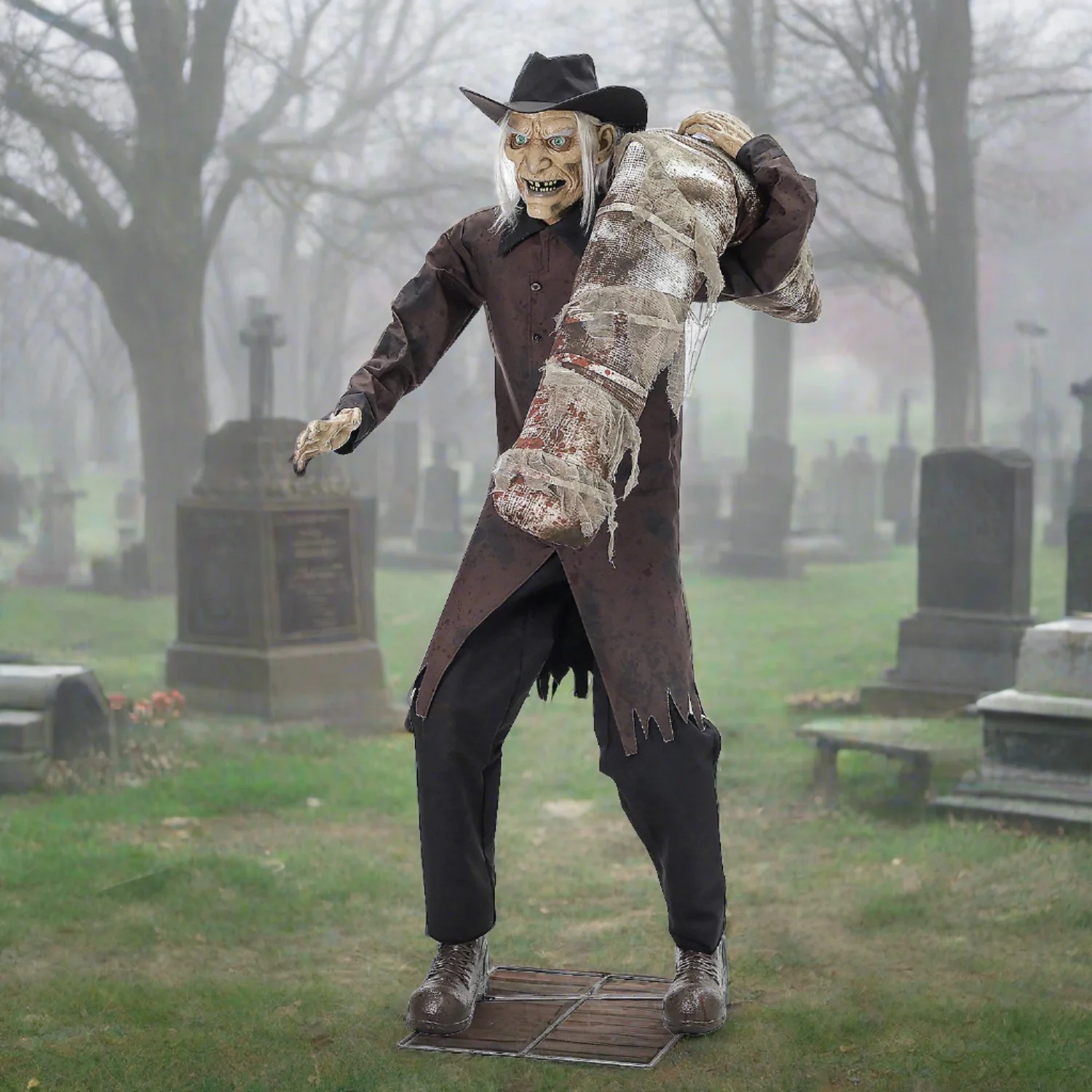

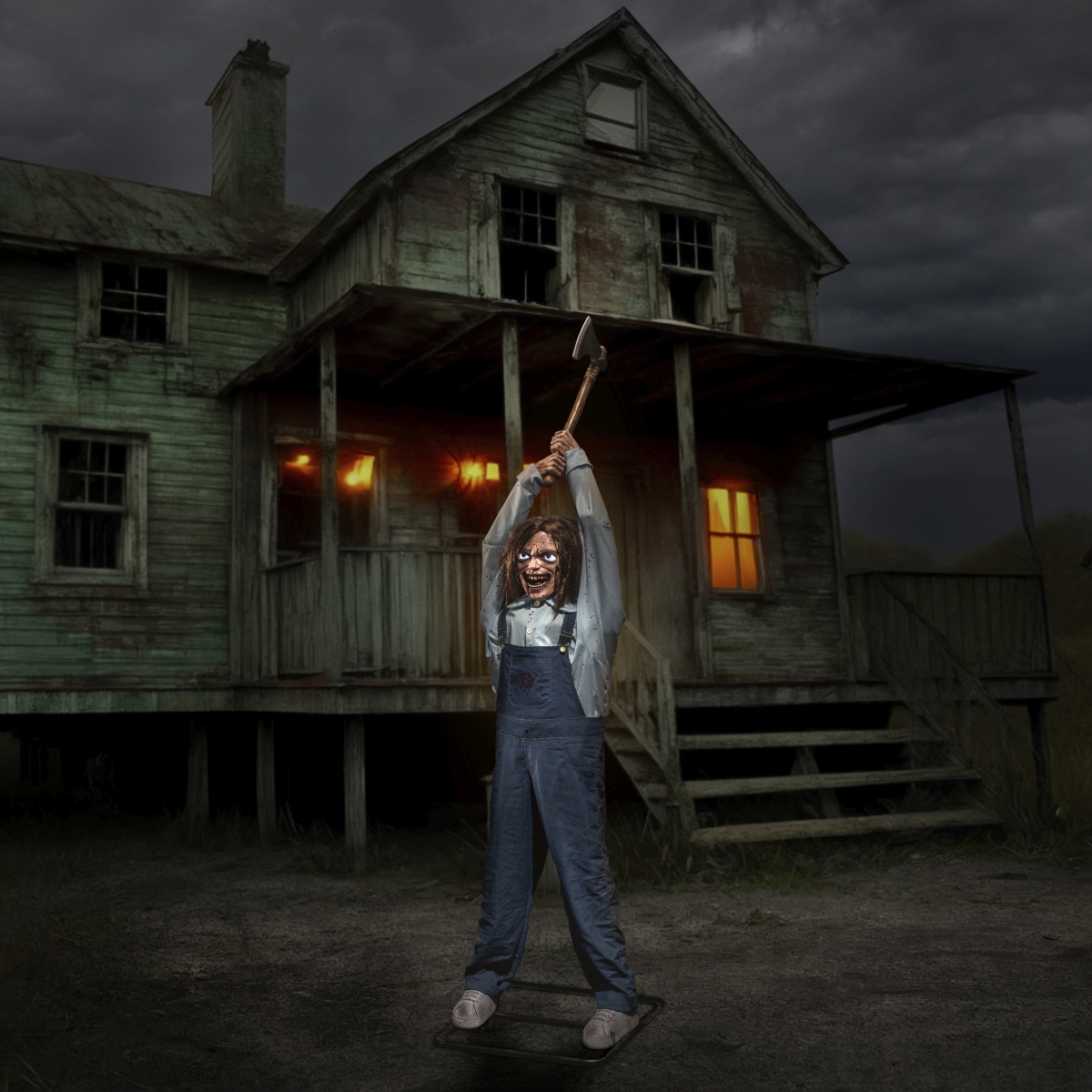




 Now available in North America
Now available in North America 